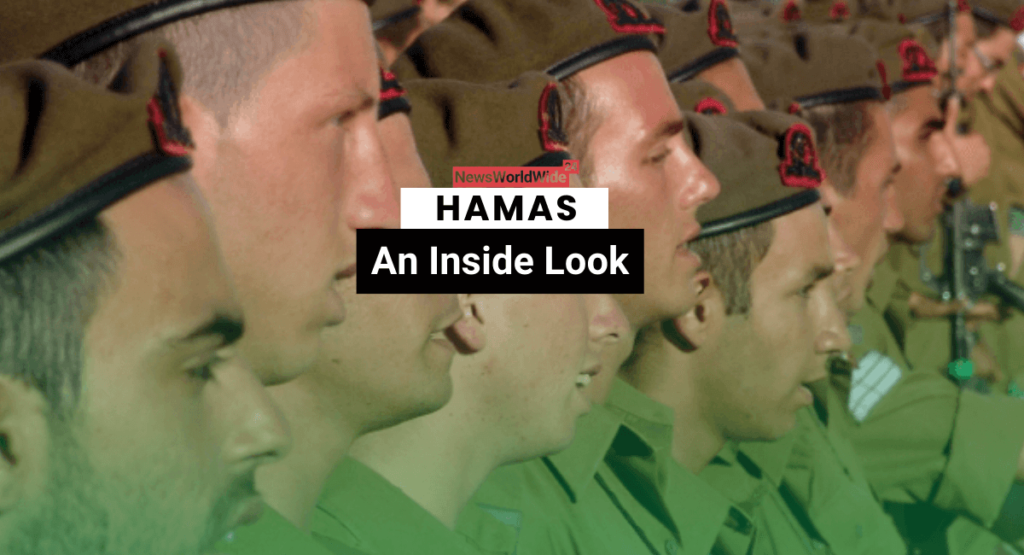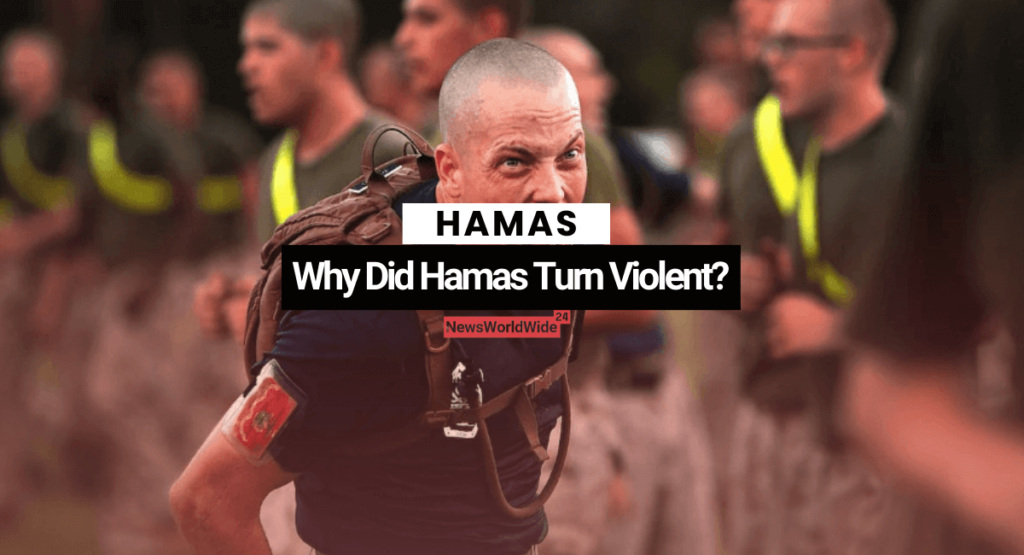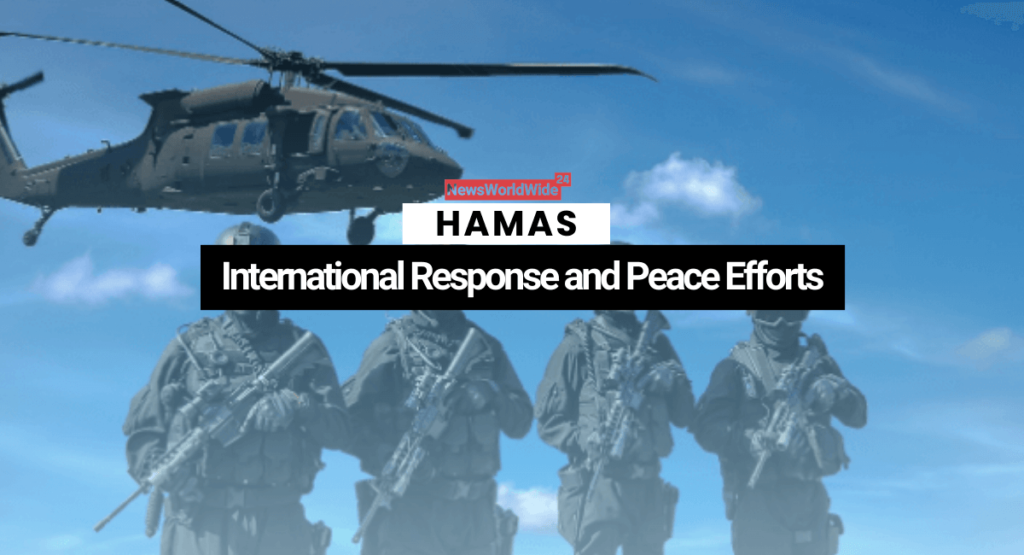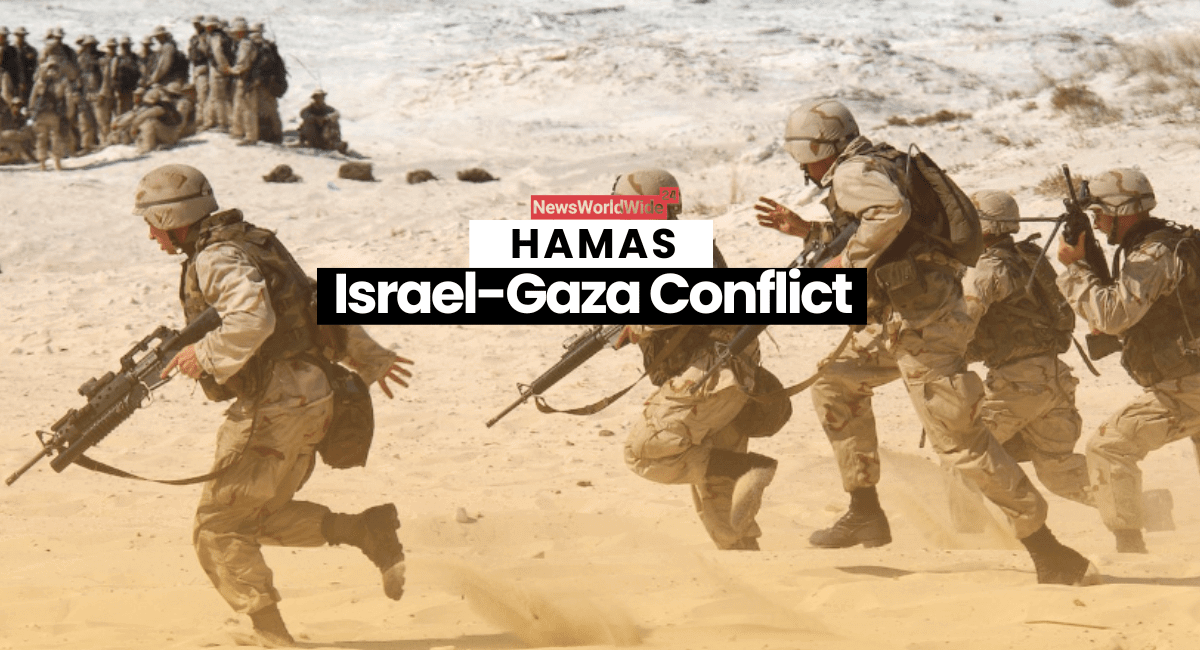I. Introduction
Hamas: In the heart of the Middle East, a decades-long conflict has shaped the lives of millions, capturing the world’s attention and empathy. The Israeli-Palestinian conflict stands as a testament to the complexities of human history and the deeply rooted struggles for land, identity, and sovereignty.
At the core of this multifaceted conflict lies Hamas, an organization whose role in the ongoing strife is pivotal yet often misunderstood.
This blog post seeks to unravel the layers of the Hamas-Israel conflict, peeling back the historical, political, and social factors that have contributed to its evolution.
By understanding the genesis and evolution of Hamas within the broader Israeli-Palestinian context, readers can gain insights into the motives, actions, and challenges faced by this influential entity.
II. Historical Roots of the Conflict
A. Origins of Hamas: Ideological Genesis and Founding Principles

To understand the Hamas-Israel conflict, it’s crucial to rewind to the late 1980s when Hamas emerged on the Palestinian political landscape.
Founded in 1987 during the First Intifada, Hamas, which translates to “zeal” or “courage” in Arabic, was established with a primary goal: to resist Israeli occupation in Palestinian territories.
Influenced by the Muslim Brotherhood, Hamas blended nationalist aspirations with Islamic principles, shaping its ideological foundation.
At its core, Hamas advocates for the establishment of an independent Palestinian state in the territories Israel occupied after the 1967 Six-Day War, including the West Bank, Gaza Strip, and East Jerusalem.
The organization’s charter, while contentious, outlines its commitment to this cause.
Understanding this ideological genesis provides a lens through which we can interpret Hamas’ actions and decisions in the subsequent years.
B. Hamas Emergence in the Landscape of the Israeli-Palestinian Conflict
Hamas rose as a formidable force, especially in the Gaza Strip, where it established a social services network that provided essential support to Palestinians in the face of economic hardship and political instability.
As it gained popularity, Hamas also became a political entity, participating in the Palestinian legislative elections in 2006. Its electoral victory in Gaza led to a complex power struggle with Fatah, the rival Palestinian political party, further adding layers of tension to the Israeli-Palestinian conflict.
The emergence of Hamas as both a political and military power altered the dynamics of the conflict.
While some Palestinians viewed Hamas as a resistance movement defending their rights, others criticized its methods, particularly the use of violence, fearing it could jeopardize the prospects of peace with Israel.
This internal Palestinian debate underscores the complexity of the situation, demonstrating that opinions on Hamas vary widely within Palestinian society.
C. Early Interactions with Israel: Seeds of Tension in the Making
Hamas’s relationship with Israel has been marked by a series of violent confrontations and attempts at negotiation.
Despite periodic ceasefires and peace initiatives, the fundamental ideological differences between Hamas and the Israeli government often led to hostilities.
Suicide bombings, rocket attacks, and other forms of violence perpetrated by Hamas, especially during the Second Intifada (2000-2005), heightened tensions and contributed to a cycle of retaliation and counter-retaliation.
These early interactions set the stage for a protracted conflict, characterized by intermittent escalations and fragile truces.
Understanding the historical context of these events is essential to grasp the deep-seated animosities and mistrust that continue to shape the Hamas-Israel relationship today.
By examining these origins, we gain valuable insights into the roots of the conflict, laying the groundwork for a comprehensive understanding of the challenges and opportunities for peace in the region.
III. Hamas: An Inside Look
A. Leadership Dynamics: Unraveling the Faces Behind Hamas

Hamas, often depicted as a monolithic entity, is, in reality, a multifaceted organization with diverse leadership structures.
Understanding the key figures within Hamas provides crucial insights into its decision-making processes.
At the top is the Political Bureau, responsible for strategic decisions and political negotiations.
Leaders such as Ismail Haniyeh and Khaled Meshaal have played significant roles in shaping Hamas’ policies and public image.
their backgrounds and ideologies offer a window into the internal workings of the organization.
B. Influence of Hamas in Palestinian Territories: Grassroots Movements and Community Impact
Hamas extends its influence far beyond the political and military spheres.
Through a network of social services, including schools, hospitals, and charities, Hamas has ingrained itself in Palestinian society, particularly in the Gaza Strip.
These services, often filling gaps left by governmental institutions, have garnered Hamas a dedicated support base.
Exploring the impact of these grassroots efforts sheds light on the complexities of public sentiment toward the organization.
C. Popularity vs. Opposition: Gauging Public Sentiment Toward Hamas
Public opinion about Hamas among Palestinians is nuanced.
While some view it as a legitimate resistance movement standing up against Israeli occupation, others criticize its methods and the impact of its actions on their daily lives.
Factors such as economic conditions, security concerns, and personal beliefs influence how Palestinians perceive Hamas.
Understanding these varying perspectives is vital in comprehending the organization’s dynamics within the Palestinian community.
By delving into the internal dynamics of Hamas, we gain a deeper understanding of the organization’s structure, influence, and challenges.
Recognizing Hamas as more than just a political or military entity allows us to appreciate the complexity of its role in the Israeli-Palestinian conflict and its impact on the lives of ordinary Palestinians.
This nuanced perspective is essential in fostering empathy and promoting informed discussions surrounding the conflict.
IV. Why Did Hamas Turn Violent?
A. Triggers and Turning Points: Understanding the Shift towards Militancy

The evolution of Hamas from a social and political organization to an armed resistance group is a complex narrative shaped by various triggers and turning points.
One significant factor has been the failure of peace talks and a perceived lack of progress toward Palestinian statehood.
Frustration over stalled negotiations, coupled with ongoing Israeli settlements in the West Bank, has contributed to a sense of disillusionment among Palestinians.
For many, especially within Hamas, peaceful avenues seemed ineffective, leading to a shift towards more militant approaches.
Moreover, the historical backdrop of the conflict, including events like the Oslo Accords and the Second Intifada, created an environment of heightened tension.
The breakdown of peace initiatives and the eruption of violence deepened the animosity between Hamas and Israel, reinforcing the organization’s belief in armed resistance as a viable strategy.
B. International Influences: Exploring External Factors Shaping Hamas’ Strategies
Hamas has been influenced by regional and international dynamics, which have played a significant role in shaping its strategies.
Support from certain countries and political entities, often driven by their own geopolitical agendas, has provided Hamas with both resources and ideological reinforcement.
Conversely, international isolation and sanctions have also influenced its radicalization, pushing the organization to seek alternative means to assert its influence and resist Israeli occupation.
The broader regional context, including conflicts in neighboring countries, has created alliances and rivalries that further complicate the situation.
Understanding these external influences is vital in comprehending the choices made by Hamas, as well as the challenges faced by international actors seeking to mediate the conflict.
The intricate web of international relationships underscores the complexity of the conflict and highlights the need for nuanced analysis when considering the actions and motivations of all parties involved.
C. Hamas’ Perspective: Armed Resistance in the Face of Israeli Occupation
From Hamas’ perspective, armed resistance is framed as a response to what it perceives as Israeli aggression and occupation.
The organization argues that its military actions are acts of self-defense, intended to protect Palestinian territories and resist Israeli incursions.
This perspective, rooted in a deep-seated sense of injustice and historical grievances, has been a driving force behind Hamas’ adoption of violence as a means of resistance.
It is important to note that while armed resistance has been a defining feature of Hamas’ strategy, it is not universally supported within Palestinian society.
Debates about the effectiveness and morality of such tactics are common, highlighting the complexity of the Palestinian perspective on resistance.
The internal disagreements among Palestinians further emphasize the multifaceted nature of their struggle against occupation and the diversity of opinions within their community.
By understanding the triggers, international influences, and the internal perspective that led to Hamas’ turn towards violence, we can gain valuable insights into the dynamics of the Israeli-Palestinian conflict.
This nuanced understanding is crucial for fostering empathy, facilitating dialogue, and exploring potential pathways toward a peaceful resolution.
V. Humanitarian Impact of the Conflict
A. Displacement and Destruction: Tragic Human Costs in Conflict Zones
The Israeli-Palestinian conflict has left a trail of devastation in its wake, particularly in the Gaza Strip and other conflict zones.
Constant military confrontations and airstrikes have led to widespread destruction of infrastructure, including homes, schools, hospitals, and vital utilities.
The result? A staggering number of displaced Palestinians, forced to leave their homes in search of safety.
Exploring the extent of this displacement and the challenges faced by these individuals provides a grim picture of the conflict’s human toll.
B. Emotional Scars: Examining the Psychological Toll on Civilians
Beyond the physical destruction, the conflict has inflicted deep emotional wounds on civilians, especially children.
Living under the constant threat of violence, witnessing the loss of loved ones, and experiencing the destruction of one’s community have severe psychological consequences.
PTSD, anxiety, and depression are unfortunately common among Palestinians, creating an urgent need for mental health support.
By shedding light on these emotional scars, we can better understand the long-lasting trauma endured by those living amidst conflict.
C. Relief Efforts: Humanitarian Organizations’ Endeavors Amidst Crisis
Despite the challenges, numerous humanitarian organizations tirelessly work to provide aid and support to the affected communities.
From emergency medical assistance to food distribution and trauma counseling, these organizations play a vital role in alleviating the suffering of Palestinians.
Exploring their efforts not only showcases the resilience of the affected population but also highlights the importance of international solidarity and support in times of crisis.
Understanding the profound humanitarian impact of the conflict is essential in fostering empathy and driving international awareness.
By acknowledging the human costs, we can inspire action, advocate for peace, and work towards a future where the people living in conflict zones no longer have to endure the devastating consequences of violence.
VI. International Response and Peace Efforts
A. Diplomatic Engagements: International Community’s Role in Mediating the Conflict

The Israeli-Palestinian conflict has been a focal point of international diplomacy for decades.
Various nations, regional bodies, and international organizations have attempted to mediate peace talks between Israel and Palestine. Initiatives such as the Oslo Accords and the Road Map for Peace aimed to establish a framework for negotiations, emphasizing the need for a two-state solution.
However, the complexities of historical grievances, territorial disputes, and differing narratives have often hindered progress.
Diplomatic efforts have involved peace summits, negotiations, and dialogues, with mediators striving to bridge the gap between the parties.
Understanding these diplomatic engagements provides insights into the challenges faced by negotiators and the intricate web of political, historical, and social factors that complicate the path to peace.
B. Peace Initiatives: From Oslo Accords to Recent Negotiations
The Oslo Accords, signed in the 1990s, marked a significant step towards peace, outlining a plan for Palestinian self-rule in parts of the West Bank and Gaza Strip.
However, subsequent negotiations faced setbacks, including disputes over borders, refugees, and the status of Jerusalem.
Despite intermittent efforts, a lasting peace agreement remains elusive. Recent negotiations and peace initiatives have explored innovative solutions, such as economic development plans and confidence-building measures.
Additionally, proposals have been put forward to address core issues, including the establishment of a sovereign Palestinian state alongside Israel.
Analyzing these initiatives provides a nuanced understanding of the evolving strategies aimed at resolving the conflict.
VII. Dispelling Misconceptions and Verifying Facts
A. Separating Truth from Fiction: Addressing Common Misconceptions about Hamas
Misinformation often surrounds the Israeli-Palestinian conflict, and Hamas, in particular, is a subject of numerous misconceptions.
Addressing these misconceptions involves clarifying the organization’s goals, methods, and historical context.
For instance, understanding that Hamas is not synonymous with all Palestinians but represents a specific political and military faction is crucial.
By debunking myths, we can foster a more accurate public discourse.
B. Fact-Checking Controversial Claims: Bringing Clarity to Murky Waters
Controversial claims and narratives further complicate the conflict discourse.
Fact-checking these claims is essential to provide clarity and prevent the spread of misinformation.
By verifying information from credible sources and experts, readers can discern reliable information from propaganda, enabling a more informed and objective understanding of the situation.
C. Media Literacy: Navigating Information in the Age of Digital Disinformation
In the digital age, media literacy is paramount. Teaching readers how to critically evaluate sources, discern biases, and cross-verify information empowers them to navigate the vast sea of information responsibly.
Encouraging media literacy promotes a discerning readership capable of engaging with news and analysis critically, fostering a more informed and constructive dialogue around the Israeli-Palestinian conflict.
By elaborating on these points, readers can gain a comprehensive understanding of the international diplomatic efforts and the importance of media literacy in shaping their perceptions about the conflict.
This knowledge equips them with the tools to engage critically with news, narratives, and peace initiatives, promoting a more nuanced and informed perspective on the complex Israeli-Palestinian conflict.
VIII. Moving Forward: A Path to Peace
A. Dialogue and Understanding: Building Bridges Between Israelis and Palestinians

One of the essential steps toward a lasting peace is open, honest, and empathetic dialogue between Israelis and Palestinians.
Genuine conversations can help break down stereotypes, dispel prejudices, and foster understanding between the two communities.
Initiatives that facilitate people-to-people interactions, such as joint cultural events, educational exchanges, and grassroots peace-building programs, play a crucial role.
By encouraging dialogue at the grassroots level, individuals can learn about each other’s narratives, histories, and aspirations, fostering mutual respect and empathy.
B. Education and Cultural Exchange: Fostering Tolerance and Mutual Respect
Education is a powerful tool for promoting tolerance and understanding.
Integrating unbiased, inclusive curricula in schools can counteract divisive narratives and promote coexistence.
Cultural exchange programs that bring Israeli and Palestinian youth together can foster friendships and connections, emphasizing shared humanity over differences.
By investing in education that promotes peace, societies can nurture generations capable of empathy, critical thinking, and constructive dialogue, essential elements for building a peaceful future.
C. Stories of Hope: Inspiring Instances of Coexistence Amidst Strife
Highlighting real-life stories of coexistence and collaboration between Israelis and Palestinians provides hope and inspiration.
Instances where individuals from both communities work together, engage in joint ventures, or support each other in times of need showcase the possibility of harmony.
By amplifying these stories, people can see the potential for peaceful coexistence.
These narratives counterbalance the prevailing narrative of conflict and demonstrate that cooperation is not only possible but also a lived reality for many individuals in the region.
IX. Conclusion
A. Recapitulation of Key Insights: Hamas as a Pillar in the Israeli-Palestinian Conflict
In revisiting the key points discussed throughout this article, it becomes evident that Hamas is a significant player in the Israeli-Palestinian conflict, deeply intertwined with the historical, political, and social fabric of the region.
Understanding Hamas in the broader context of the conflict is essential for comprehending the challenges and complexities faced by both Israelis and Palestinians.
B. Encouragement for Readers: Empathy, Understanding, and the Path to Lasting Peace
Empathy and understanding are the cornerstones of a peaceful resolution.
By empathizing with the experiences, grievances, and aspirations of both Israelis and Palestinians, readers can contribute to a more empathetic and constructive dialogue.
Engaging critically with information, questioning biases, and seeking diverse perspectives can lead to a more comprehensive understanding of the conflict, paving the way for informed discussions and informed decisions.
C. A Collective Hope: Towards a Harmonious Future for Israelis and Palestinians
In concluding this exploration of Hamas and the Israeli-Palestinian conflict, it is important to acknowledge the collective hope for a harmonious future.
While the path to peace is undoubtedly challenging, the examples of dialogue, education, and cooperation provide glimpses of what is possible.
By fostering a culture of understanding, empathy, and cooperation, there is genuine potential for a future where Israelis and Palestinians coexist peacefully, side by side, embracing the richness of their shared history and culture while working towards a harmonious and prosperous future.

